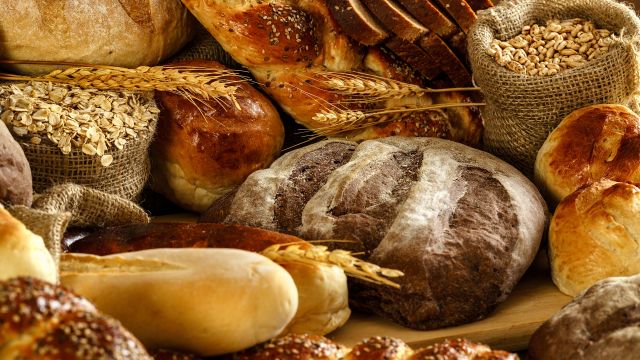Updated on March 28, 2024.
If you’ve walked down the aisles of any supermarket lately, you’ve probably seen a whole lot of labels plastered with “whole.” Whole foods, whole wheat, and plenty of whole grains.
Food manufacturers know that whole grains are some of the most healthful ingredients you can eat—and that consumers are increasingly aware of the power of these nutrient-rich foods.
But even as more foods seem to be made with them, it’s important to realize that not all whole grains are created equal. Here are answers to some key questions about whole grains to help you understand what they are, what to look for, and how to incorporate them into your eating plan.
How many servings of whole grains should you eat each day?
Although a widely accepted guideline for nutrition is three to five servings of daily whole grains, a diverse diet that includes six or more servings per day is recommended to keep your body as fit as it can be. (Your recommended daily intake will depend on various factors, including your age, weight, activity level, health conditions, and sex.)
If that seems like more whole grain than you can handle, remember that a single serving is not very large. Sample serving sizes include one half cup of cooked oatmeal, one slice of whole-grain bread, or one half cup of cooked whole-grain pasta. Have a hearty bowl of oatmeal for breakfast, a whole-grain sandwich for lunch, and a plate of whole-grain pasta for dinner (with some lean protein and plenty of vegetables on the side) and you have practically satisfied your allowance.
If getting up to speed on your whole grain quota still feels steep, start by aiming for three or four daily servings of whole-grain foods and working up from there. Some ideas to start: Add wheat bread, brown rice, and soba noodles to your plate.
What's in whole grains that makes them so special?
The key is that whole grains are only minimally processed during manufacturing, leaving the most nutritious parts of the food intact.
A whole grain retains three of its original elements:
- The outer shell, or bran, which contains fiber, vitamins, and minerals
- The germ, which contains healthy plant compounds called phytochemicals
- The endosperm, which contains carbohydrates and protein
Processing or refining grains strips away the bran and the germ, leaving you eating only the endosperm. But when the whole grain is left intact, you get more fiber and more micronutrients that help you feel satisfied, keep your digestive system running smoothly, and protect you against disease.
What are some good sources of whole grains?
Foods such as millet, bulgur, and whole wheat that have been made with unrefined (unprocessed) flours and grains contain good amounts of whole grains. When it comes to healthy eating, brown rice, soba noodles, whole-wheat bagels, barley, and oatmeal are all great sources of whole grains. Foods rich in bran contain healthy amounts of fiber, B vitamins, and antioxidants.
Foods made with refined (processed) flours, such as white bread, on the other hand, not only contain less fiber, but they may also be depleted of certain nutrients that whole grains contain, such as lignans, which may help lower your risk of heart disease and possibly cancer.
When shopping for whole grain foods, look for terms such as "100% whole grain" or "100% whole oats.” That 100 percent is important, because manufacturers sometimes print "whole grain" on products containing only small amounts of actual whole grains.
How do whole grains contribute to health?
A diet rich in whole grains, rather than processed grains, can help you:
- Lower your risk of heart disease.
- Keep control over your blood sugar levels.
- Feel full and maintain a healthy weight.
- Keep your digestive system regular.
Research published in the July 2021 issue of The Journal of Nutrition found that greater intake of whole grains was associated with lower blood sugar, lower blood pressure, lower levels of LDL (aka "bad" cholesterol), and lower waist circumference in both men and women.
The carbohydrates found in whole-grain breads are healthier than those in refined flours because they take longer to digest and cause glucose (or blood sugar) to be released into the bloodstream more slowly over time. In addition to being better for blood sugar control, whole grains contain plenty of fiber to help you feel full and maintain a healthy weight.
Whole-grain barley is an excellent source of both soluble and insoluble fiber. Insoluble fiber works to keep your digestive system healthy by helping to maintain regular intestinal function. Soluble fiber may help lower your cholesterol levels, thus reducing your risk of heart disease.
Note: When you shop for barley, make sure to skip pearl barley. This type has been polished to remove the outer layer and the hull, so it’s not a whole grain.
How can you incorporate more whole grains and bran into your daily diet?
Get started on the road to healthy eating with these simple tips:
- Eat whole-grain breakfast cereals, such as bran flakes, shredded wheat, or oatmeal.
- Make sandwiches with whole-grain breads.
- Cook soup and chili with barley.
- Serve brown rice, soba noodles, or bulgur side dishes instead of pasta or white rice.







